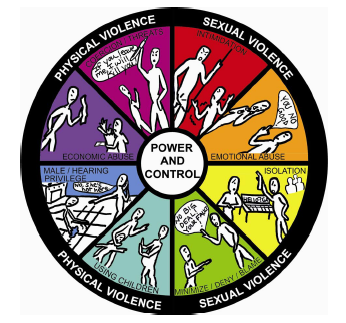Despite limited data on the issue, available research suggests that Deaf individuals may experience domestic and sexual violence at significantly greater rates than hearing individuals. Data from an eight-year survey of college students at Rochester Institute of Technology indicated that deaf and hard of hearing individuals are 1.5 times more likely to be victims of relationship violence, including sexual harassment, sexual assault, psychological abuse and physical abuse, in their lifetimes (Rochester Institute of Technology, 2010).
Deaf-specific research on domestic violence is just beginning to emerge. Findings from a computerized American Sign Language survey administered by Pollard and colleagues suggest that deaf adults who use sign language experience notably higher rates of intimate partner violence (IPV) than does the general population, at least in some IPV categories. Key findings from this survey include:
- Data regarding emotional abuse identify it as the form of IPV most frequently reported by deaf persons, with lifetime rates exceeding 25% (Pollard, Sutter & Cerulli, 2013).
- Reports of physical abuse appear to be at least as common among the deaf samples, if not slightly more so, as in the general population (Pollard, Sutter & Cerulli, 2013).
- The forced sex results suggest that sexual violence is much more frequently experienced by deaf persons, consistent with previous research (Pollard, Sutter & Cerulli, 2013).
 Similarly, research has just begun to explore the prevalence and consequences of sexual assault among Deaf individuals. Information available from sexual assault service providers (both Deaf and hearing) suggests that sexual assault is a significant problem in the Deaf community, although many providers do not see Deaf clients presenting with sexual assault issues (Obinna, Krueger, Osterbaan, Sadusky & DeVore, 2006). This is because Deaf survivors appear to experience profound isolation and lack of options in seeking help. Services are generally unavailable to this group in hearing agencies. Moreover, disclosure to formal support services about abuse may be hindered by the intimacy that exists in the Deaf community (Obinna et al., 2006).
Similarly, research has just begun to explore the prevalence and consequences of sexual assault among Deaf individuals. Information available from sexual assault service providers (both Deaf and hearing) suggests that sexual assault is a significant problem in the Deaf community, although many providers do not see Deaf clients presenting with sexual assault issues (Obinna, Krueger, Osterbaan, Sadusky & DeVore, 2006). This is because Deaf survivors appear to experience profound isolation and lack of options in seeking help. Services are generally unavailable to this group in hearing agencies. Moreover, disclosure to formal support services about abuse may be hindered by the intimacy that exists in the Deaf community (Obinna et al., 2006).
Deaf victims of domestic and sexual violence face unique barriers in seeking help including isolation, compromised confidentiality, and lack of linguistically and culturally appropriate services. They are also subject to specific tactics of abuse that must be recognized and understood by service providers, Deaf and hearing alike.
Resources in this section provide information about the prevalence of domestic and sexual violence in the Deaf community. Also included is information on common Deaf-specific tactics of abuse used by perpetrators, as well as insights into the unique circumstances faced by Deaf victims, including available research related to their service needs.









